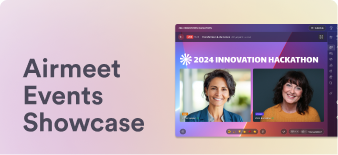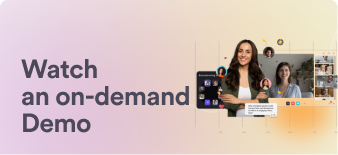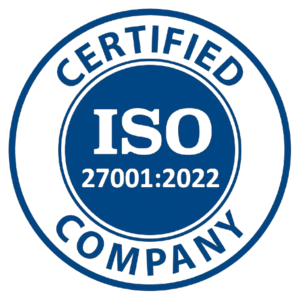But managing such events smoothly, especially for hundreds or thousands of attendees, is no small feat. It requires a combination of the right platform features, robust technology, and thoughtful planning.
This article explores the tools and capabilities that make virtual town halls seamless, engaging, and effective, especially when scaling up for large audiences
Why Virtual Town Halls Need to Run Smoothly
Virtual town halls are no longer just a temporary substitute for in-person meetings—they are now a strategic communication tool used by organizations across the globe. Especially in hybrid and remote-first workplaces, they serve as a crucial touchpoint between leadership and employees, offering transparency, alignment, and connection at scale.
But the effectiveness of these events hinges on execution. A smooth virtual town hall reflects professionalism, instills confidence, and ensures that leadership’s message resonates clearly with employees.
On the flip side, a poorly executed one with glitchy audio, frozen video, confusing transitions, or unanswered questions can lead to frustration, disengagement, and even a loss of trust.
Here’s why running a virtual town hall smoothly is vital:
- Helps to build the credibility of your brand and foster trust among the attendees. Seamlessly executed town halls make sure that all participants, no matter where they are located physically, have hassle-free access to the important discussions and information being shared at the event.
- A town-hall, when executed properly, can make attendees feel important, and subsequently motivate them to increase productivity.
- A smooth virtual town hall will encourage participation among the attendees, aiding in keeping up the session engagement. The higher the engagement, the more invested and attentive audiences are likely to be.
- A smoothly executed town hall event will help deliver the event’s message to the attendees properly. Your communication is made more impactful when the event has minimal distractions and maximum interactivity.
- A well-organized town hall reflects company culture. It shows that the company takes communication, employee experience, and transparency seriously.
In today’s fast-moving business landscape, where workforces are distributed and attention spans are short, your town hall must do more than just broadcast updates. It should foster alignment, encourage interaction, and create moments of shared purpose. That level of impact is only possible when every technical and experiential element works in harmony.
Must-have Features in your Virtual Townhall Platform
While there are several virtual town hall platforms to choose from, it is imperative that you make your choice based on the following features. Your tool should provide these must-have features, so you can deliver seamless, friction-free events to your audiences time after time.
1. Scalability and Platform Reliability
Your virtual town hall platform should handle sudden traffic spikes, large attendee counts, and concurrent logins without breaking a sweat. As audience size grows, so do the technical demands.
- Performance under pressure: An unstable platform can result in lags, crashes, or attendee lockouts—undermining the entire effort.
- Consistent user experience: Every participant, no matter where they are logging in from, should enjoy a seamless experience.
- Reduced support needs: With a reliable platform, you avoid last-minute IT tickets and attendee confusion.
- Opt for cloud-based, enterprise-grade platforms with built-in content delivery networks (CDNs) and load-balancing architecture to scale securely and smoothly.
2. Robust Engagement Features
A great town hall isn’t a one-way presentation—it’s a conversation. Interactive tools foster a sense of belonging and ensure that attendees stay connected with the content.
- Two-way dialogue: Features like moderated Q&A and upvoting allow employees to participate meaningfully and raise important topics.
- Real-time sentiment: Emoji reactions and live polls give instant feedback to speakers, helping them adjust tone or pacing.
- Improved retention: When people interact with content—via quizzes, comments, or polls—they’re more likely to remember it.
Make sure your platform includes features like live Q&A moderation, audience reactions, in-session polls, and chat to keep engagement high.
3. Moderator and Host Controls
Behind every smooth town hall is a skilled host or moderator managing the experience from backstage. Control features are critical in managing live dynamics and ensuring things stay on track.
- Crisis prevention: The ability to remove disruptive attendees or mute problematic audio protects the event’s integrity.
- Speaker support: Moderators can spotlight speakers, manage transitions, and help with screen shares without disrupting flow.
- Time management: With backstage chat and speaker cueing, transitions can be tight and professional.
Look for platforms offering backstage prep rooms, centralized controls for screen sharing, and the ability to preview content before going live.
4. Accessibility and Inclusivity Features
An inclusive town hall is one where everyone, regardless of physical ability, language, or tech comfort level, can participate fully.
- Closed captions and language translation accommodate linguistically diverse and hearing-impaired audiences.
- Not everyone has a high-end laptop. A good platform supports mobile, tablet, and low-bandwidth connections.
- Accessibility isn’t just nice to have—it’s essential for equity and in some regions, it’s a legal requirement.
Choose tools that offer
- Live or automated captioning
- Multilingual support
- Keyboard navigation
- Screen reader compatibility
5. Breakout Rooms and Social Features
Large-scale town halls are typically one-to-many broadcasts, but breakout features add depth by offering small group interactions post-event or during transitions.
Interactive options include
- Breakout rooms for team-specific discussions or networking.
- Virtual tables where employees can gather in themed clusters.
- Speed networking for cross-departmental connections.
- Social lounges for informal engagement after the main session.
These features are valuable for extending the town hall experience.
6. Integration with Communication and Calendar Tools
Managing attendance, sending reminders, and streamlining access becomes complex at scale. Integration with existing workplace tools makes the process smoother for everyone.
- Calendar invites with built-in reminders ensure people show up.
- SSO (Single Sign-on) can help employees join the event without complicated logins or external registration.
- Syncing with internal tools—like Slack or HRIS – helps pre-fill attendee lists as well as automate follow-ups.
Ensure your platform works with tools your organization already uses, such as Outlook, Google Calendar, Slack, MS Teams, and enterprise identity providers.
7. Event Analytics and Post-Event Insights
The town hall doesn’t end when the livestream does. Data collected during the event helps you evaluate success, plan follow-ups, and improve future sessions.
- Know which topics resonated with the attendees the most, the polls questions which saw high response rates, and when drop-offs occurred.
- Share detailed attendance and engagement reports with executives for internal reporting.
- Use feedback and analytics to tweak timing, speakers, or formats for future events.
Look for platforms that offer visual dashboards, downloadable reports, and integration with tools like Google Sheets or BI platforms.
8. Technical Rehearsals and Dry Runs
Even the best tech can falter without human readiness. Dry run & technical rehearsals ensure that presenters, moderators & support staff know what to expect and what to do if something goes wrong.
- Speaker confidence: When presenters know where to click and how to manage transitions, they appear more poised and professional.
- Bug identification: Dry runs help catch AV issues, formatting glitches, or broken links that might disrupt the live event.
- Backup readiness: Teams can develop contingency plans in case something fails mid-event.
Ideally, the platform should allow private dry runs using the full feature set without affecting the live audience.
9. Security and Compliance
Trust is paramount—especially when town halls include confidential updates, executive announcements, or sensitive HR topics. A secure platform ensures your message stays internal and protected.
- Protecting sensitive data: From financial results to workforce changes, town halls often contain internal-only content.
- Access control: Unauthorized access can damage reputation or breach compliance obligations.
- Industry requirements: Many sectors, especially healthcare and finance, must meet strict data handling standards.
Opt for platforms offering end-to-end encryption, GDPR/SOC 2 compliance, two-factor authentication, and access controls based on email or SSO.
How Airmeet Supports Seamless Virtual Town Halls
Airmeet is a virtual events platform designed specifically with large audience engagement in mind. For organizations across the world, it offers a powerful suite of tools to host company-wide town halls that are interactive, secure, and inclusive.
Why Airmeet works well for large virtual audiences
- Scalable HD Streaming: Regardless of the size of your audience, Airmeet delivers high-definition streaming of your virtual town halls, whether it is a ten-member internal meeting or an audience size of thousands.
- Interactive Engagement Suite: Airmeet is arguably the best when it comes to interactivity and audience engagement, with features like polls, emoji reactions, Q&A, etc and real-time chat options.
- Backstage and Moderator Control: Airmeet allows town hall speakers to prepare for the event privately behind the scenes, while the hosts carry on with the show, manage questions from the attendees, etc.
- No Downloads Required: Airmeet is browser-based, and only needs a desktop or a mobile with stable internet connectivity to log in. No downloading and installation of any apps needed.
- Inclusive by Design: Features like live captions, subtitles, multilingual support, and screen reader compatibility make it accessible for all attendees.
- Networking Capabilities: Be it virtual an or in-person event, event attendees look forward to networking opportunities which Airmeet does exceptionally well. It offers exclusive social lounges and breakout rooms to allow interactions that extend value beyond the event.
- Post-Event Insights: Detailed analytics on participation, engagement, and session flow help you understand event performance and improve future town halls accordingly.
Whether your goal is to improve internal communication or team building, Airmeet can reinforce your efforts with a powerful town hall experience.
Bottom Line
A successful virtual town hall is more than a livestream—it’s a strategic, interactive experience that brings teams together across distances. As organizations grow and distribute, having the right features in place becomes non-negotiable.
From HD streaming and moderated engagement to robust analytics and accessibility, the tools you choose can make or break the experience for hundreds—or even thousands—of employees.
With a platform like Airmeet, you can deliver smooth, scalable, and human-centered communication that inspires action and builds alignment across your organization.
FAQs
Moderators have an array of responsibilities in the virtual town halls including
- Filter and prioritize questions from the attendees
- Maintaining up the chat flow
- Spotlighting the guest speakers
- Provide immediate technical support, if needed
Choose platforms that offer live captioning, multilingual support, and mobile access. Test these features in advance.





























